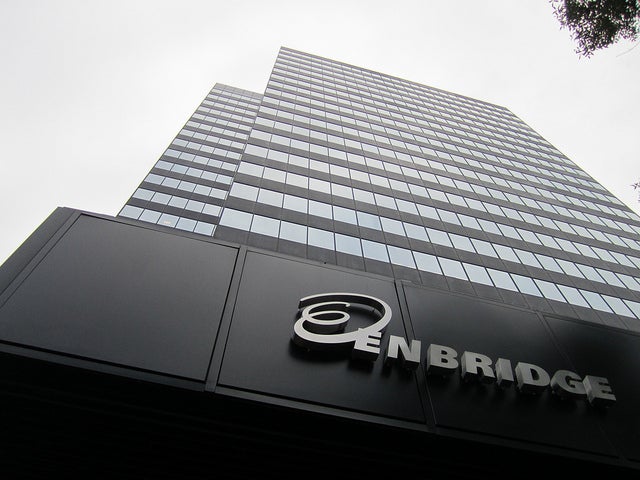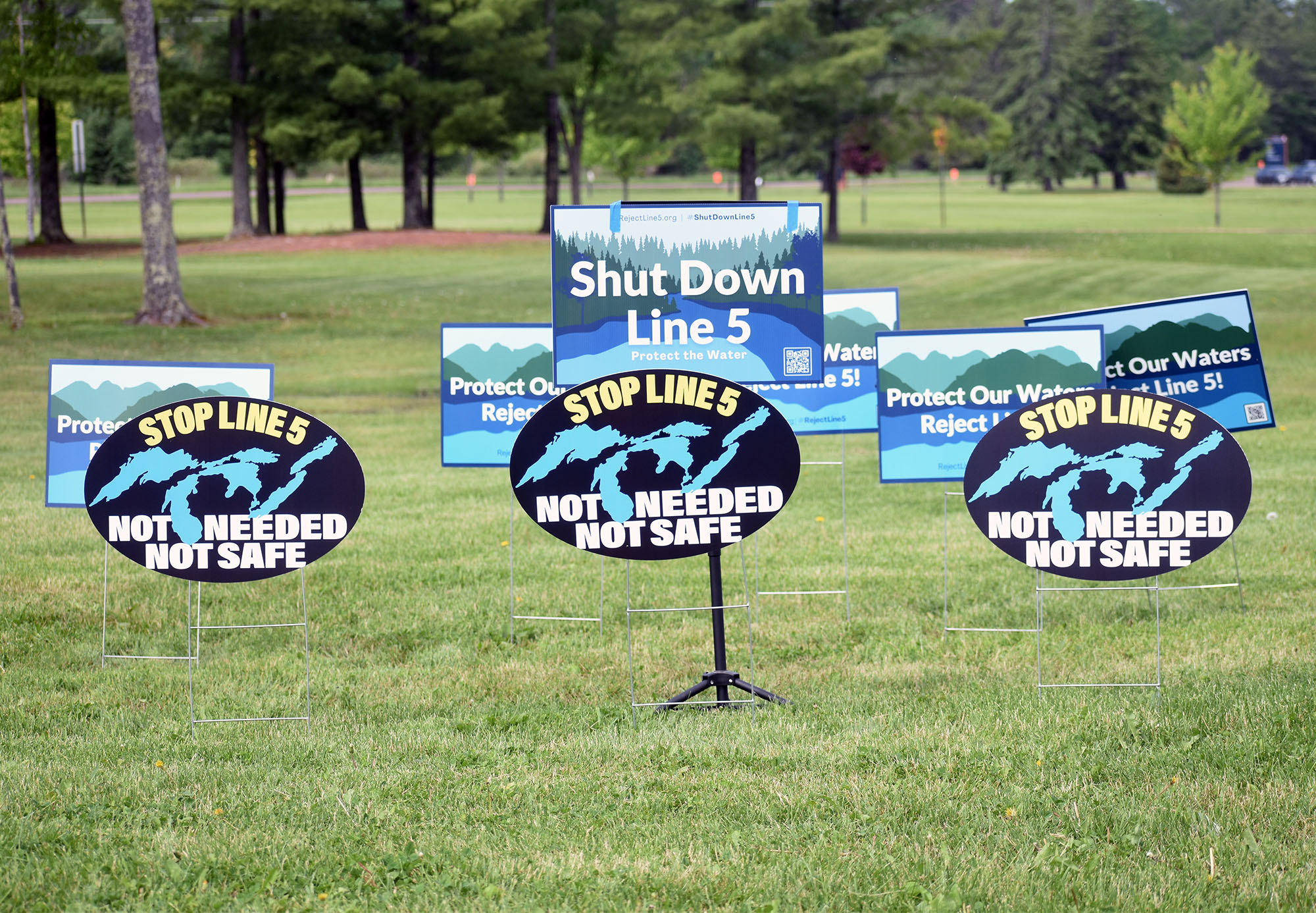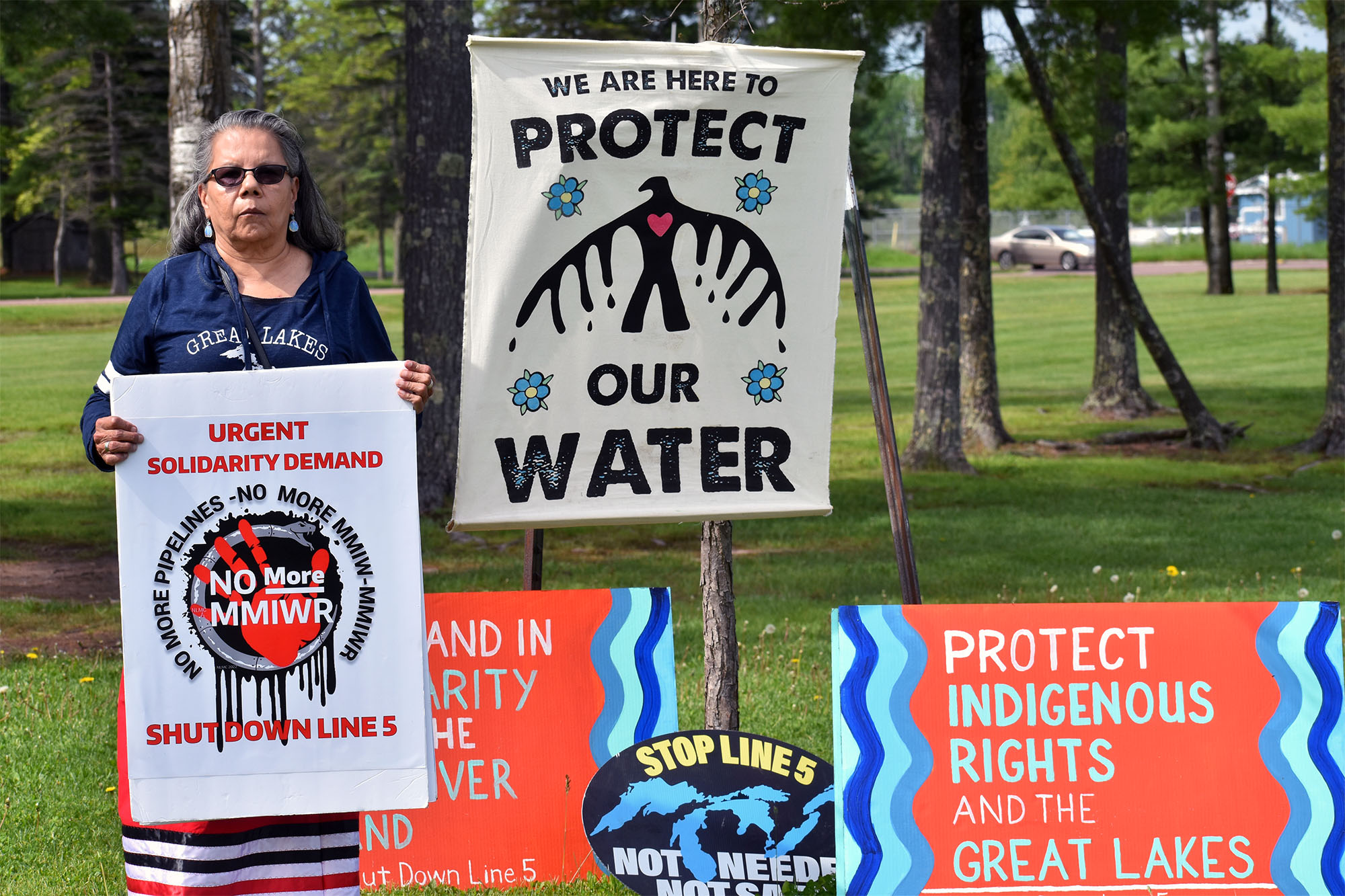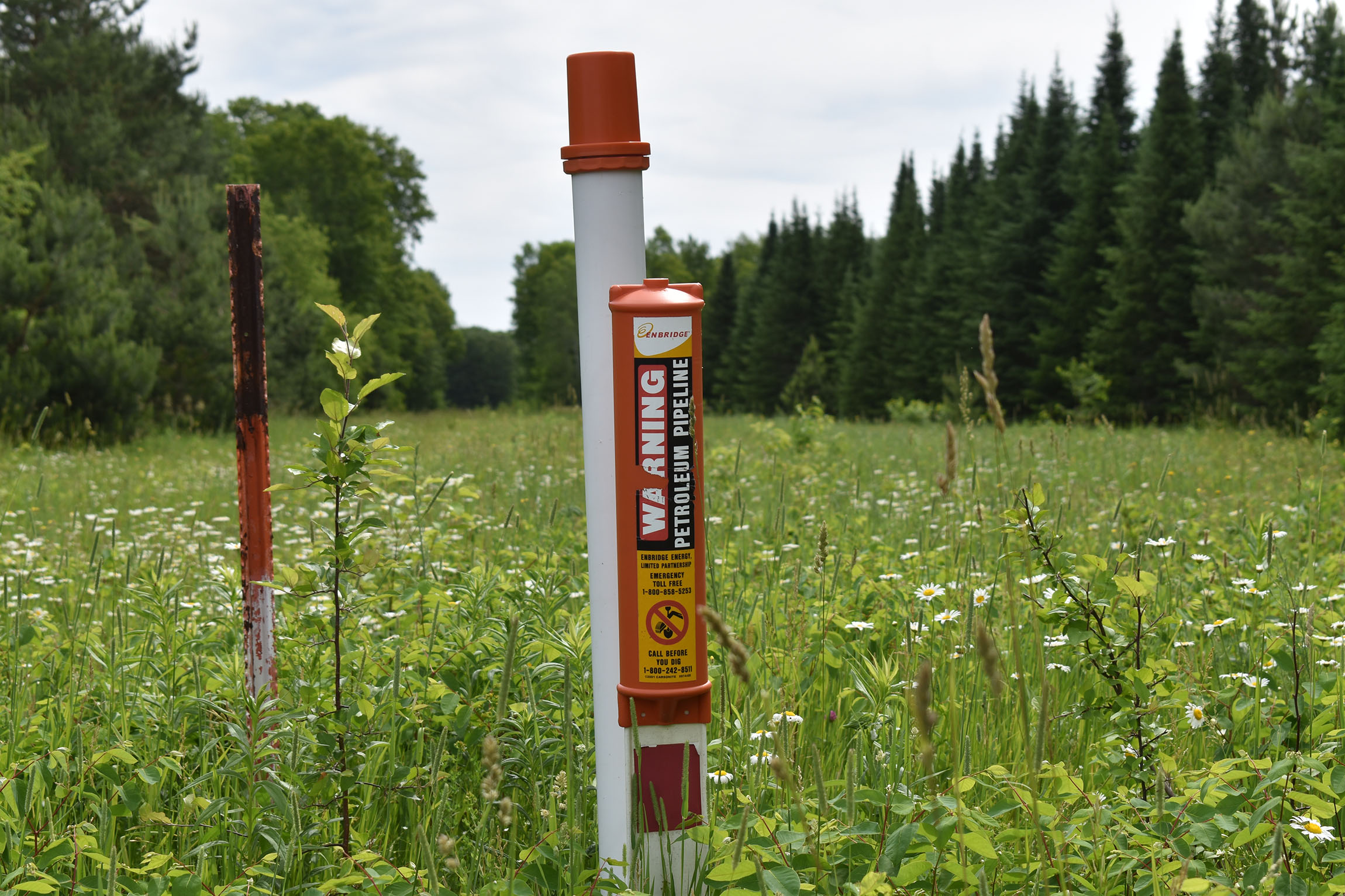A final report has been released on alternatives to using Enbridge Energy’s Line 5 to carry oil and natural gas under the Straits of Mackinac. Critics say the line with 64-year-old dual pipelines poses too great a risk to Michigan and the Great Lakes.
The alternatives outlined in the final report include replacing the line, using existing lines or constructing a new line potentially through Wisconsin.
Michigan hired independent research firm Dynamic Risk Assessment Systems in 2016 to review alternatives to transporting up to 540,000 barrels of oil and natural gas per day through Line 5 running from Superior through northern Michigan to Sarnia, Ontario.
Stay informed on the latest news
Sign up for WPR’s email newsletter.
Beth Wallace, pipeline safety consultant for the National Wildlife Federation, said Michigan residents would pay a few cents more at the gas pump and roughly 10 to 25 cents more for propane if Line 5 were decommissioned. The report outlined six alternatives to replace the line or take it out of service.
“I think the solution is really a combination of different solutions and efforts,” Wallace said. “There’s definitely the option to remove the pipeline, and Michigan consumers would see very little effect from that. In fact, most of the product from this pipeline derives from Canada and then enters back into Canada from Sarnia.”
The report didn’t make any recommendations, but it laid out the potential costs and risks associated with each option.
The final report outlines nearly all alternatives were feasible except for moving Line 5 products onto existing pipelines.
One alternative examined the construction of new pipelines that don’t cross the Great Lakes.
The report identifies three potential routes for a new pipeline, including a “Southern Route” that would follow existing pipelines through Wisconsin and continue south to Chicago and east to Sarnia. The new 30-inch diameter pipeline would follow existing Enbridge Lines 6, 14 and 64 and carry a capacity similar to Line 5. The new pipeline would also pass through 29 rivers, 56 stream crossings and 130 miles of wetlands in Wisconsin, according to the report.
If Enbridge were to decommission Line 5 and build new, constructing a new pipeline through Wisconsin would be the most cost-effective option. The proposed Southern Route would cost around $2 billion, which is half the cost of a potential “Northern Route” running from Superior north into Canada and east toward Sarnia.
Enbridge spokesman Ryan Duffy provided the following statement on the report’s findings:
“Enbridge appreciates the comprehensive final Alternative Analysis report. The report generally represents a thorough, deliberate and expert consideration of the safety, feasibility and cost of alternative methods to transport energy to the Great Lakes region. Equally significant, the report reiterates the importance of Line 5 to the region. We look forward to continuing to work with the state of Michigan to ensure the safe operation of Line 5 and reassuring Michiganders that the dual pipelines are something on which they can rely to meet their energy needs.”
Wallace said there should be a “temporary hold” on Line 5 while Enbridge answers questions about the safety of the pipeline.
The Detroit Free Press reported in late October that Enbridge officials knew several years ago that some areas of the line were missing a protective coating that’s required under Michigan’s easement agreement with the company.
“Enbridge did know about this as early as 2014 but failed to communicate it internally and externally to decision makers and regulators,” Wallace said.
Enbridge has been quoted as saying the company’s failure to notify the state was due to an “internal reporting issue.”
Michigan officials are accepting public comment on the report over the course of the next month.
Wisconsin Public Radio, © Copyright 2024, Board of Regents of the University of Wisconsin System and Wisconsin Educational Communications Board.





